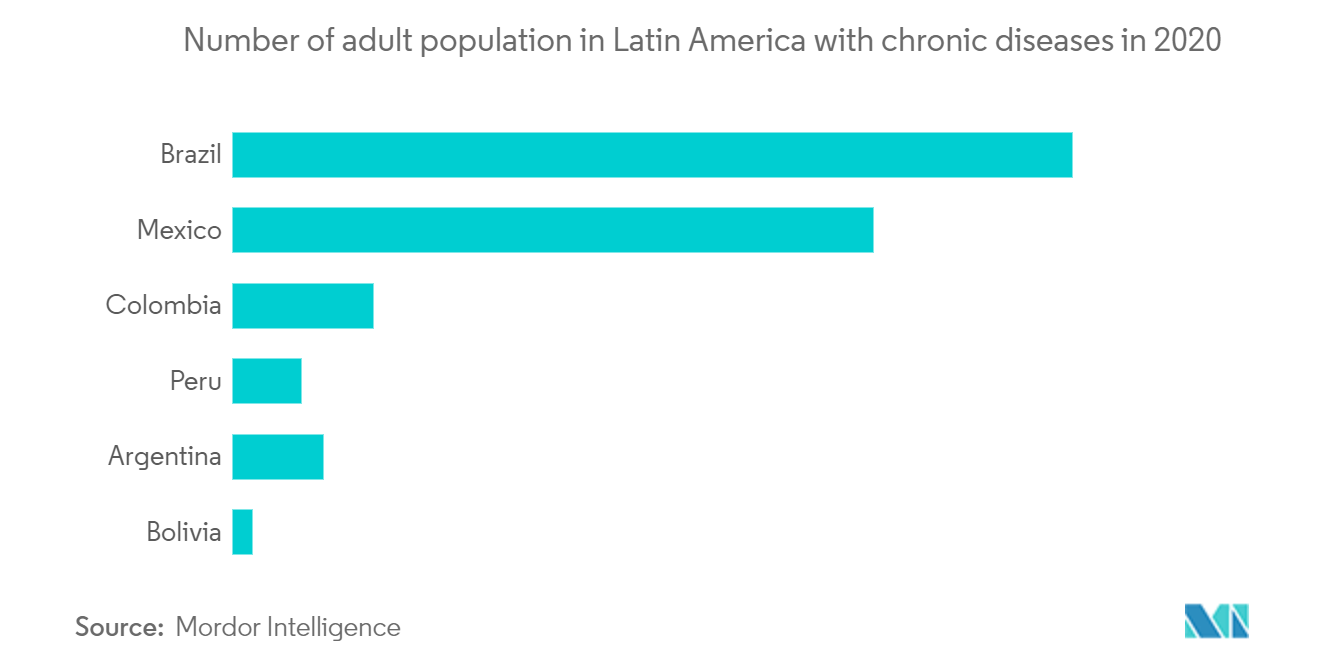Market Trends of Telehealth Services Industry in Latin America
This section covers the major market trends shaping the Latin America Telehealth Services Market according to our research experts:
Increasing burden of Chronic Diseases
Approximately 86% of health care expenditure in Latin America is because of chronic and mental health conditions. It is estimated that by 2025, chronic diseases will affect around 164 million Americans which is almost 50% of the population. Most of the individuals with a chronic conditions are elderly which arises mobility limitations.
Typically people with multiple chronic conditions require regular visits to physicians and telehealth promises to bridge the gap in chronic disease management. It ensures easy access to care for this population and helps both the patients and the treatment providers to have a proper treatment plan, medication plan, long term chronic care management which helps to reduce avoidable healthcare costs.
In Latin America, the rise of Chronic ailments such as arthritis, cardiovascular disease, diabetes, cancer, etc. requires a continual medical consultancy is catalyzing the demand for telehealth services. Additionally, the growing adult population is falling prey to serious medical conditions which are driving the need for homecare-based medical treatment.

Technological Advancement is the helping the market to grow
Telehealth is a growing versatile technology delivering healthcare services digitally and virtually to patients in remote locations. Through these advanced digital technologies, delivery of patient-centric care to remotely located patients has been possible, reducing the need for emergency department visits and declining hospitalization rates significantly, thereby propelling the market growth.
Technological innovations such as the emergence of health monitoring smartphone applications are becoming a growth-inducing factor for the telehealth industry. The growing penetration of smart wearable devices for real-time monitoring of blood glucose levels, blood pressure, sleep patterns, heart rate, etc., has also supported the market growth. Besides this, extensive investments in the field of medical sciences, along with the continuous up gradation in telecommunication technologies are anticipated in the near future.
Innovation in the digital healthcare industry, such as the internet of things (IoT) and advanced healthcare analytics, smart wearable devices, and strong internet & smartphone connectivity, is significantly shaping the telehealth industry and providing seamless patient monitoring and efficient chronic disorder management. Furthermore, the amalgamation of AI and machine learning algorithms has enhanced the personalization of healthcare services.
With the growth of social distancing recommendations, it has become high time to adopt Telehealth services. Growth in internet penetration has increased the use of these services. As telehealth providers provide online consultation and online pharma services, the use of internet connection has become an important role.


